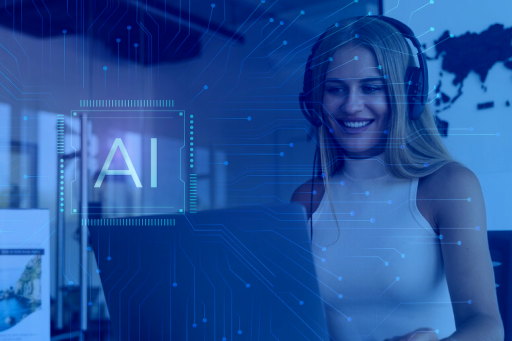
Artificial intelligence has become a game-changer in the translation industry, offering incredible tools and efficiencies that were unimaginable a few years ago. When is it good to include AI in your process, and what should you look out for?
One of the primary challenges language experts face with AI integration is managing unrealistic expectations. Companies often misunderstand the capabilities of AI translations, expecting them to be flawless. This misconception can lead to conflicts when the output does not meet these high expectations. While powerful, AI struggles with nuances, idiomatic expressions, and context-specific language that human translators handle adeptly.
Over-reliance on AI tools poses another significant issue. Clients may begin to undervalue human expertise, thinking AI can replace the need for professional translators. This perception risks devaluing the essential skills of human translators who ensure culturally sensitive and accurate translations. Moreover, an over-dependence on AI can lead to a deterioration of traditional translation skills, as professionals might start relying too heavily on technology, potentially eroding their proficiency.
Reliance on AI introduces risks associated with technological failures. System outages, bugs, or software malfunctions can disrupt translation workflows, causing delays and impacting the overall quality of work. These technical issues underscore the need for a balanced approach, where AI tools are complemented by human oversight to mitigate potential disruptions.
Cost and accessibility barriers also present significant challenges. Advanced AI technologies can be prohibitively expensive, limiting access for many language experts and smaller businesses. The digital divide intensifies this issue, as socioeconomic disparities can create an educational gap in access to AI-powered language tools. Ensuring equitable access to these technologies is crucial for fostering an inclusive and diverse translation industry.
The integration of AI in translation raises complex issues surrounding copyright and intellectual property. Training AI models often involves using vast amounts of copyrighted data, raising ethical questions about fair use. Additionally, the interaction between AI and human translators introduces new considerations regarding intellectual property rights and the ownership of translated content.
Responsible development of AI translation tools is another critical area. Developers have an ethical obligation to prioritize fairness, accuracy, and transparency in AI translations. Collaborating with linguists, ethicists, and end-users can help craft inclusive and responsible AI solutions. Ensuring that AI models are developed and deployed ethically will be essential in building trust and acceptance within the industry.
Inconsistent quality remains a persistent challenge with AI translations. While AI can handle technical translations with high accuracy, it often struggles with idiomatic expressions, cultural nuances, and context-specific language. This variability in quality can lead to client dissatisfaction and highlight the limitations of current AI technology.
As AI tools become more integrated into translation workflows, translators must adapt by acquiring new skills. Proficiency in using AI tools, integrating them into daily tasks, and understanding their limitations are now essential. Continuous learning and adaptation are crucial as the industry evolves. Hybrid roles are emerging, where translators act as post-editors, focusing on refining and ensuring the quality of AI-generated translations.
Data security and privacy are significant concerns when using AI tools, especially free or publicly available ones. Clients need to be aware of the risks involved in using these tools for sensitive content. Ensuring robust data security measures and understanding the privacy implications of AI translations are critical for maintaining client trust and safeguarding confidential information.
Domain mismatch is another challenge. AI models trained on general-purpose data often perform poorly when applied to specialized domains, such as legal or medical texts. Adapting models to these specific domains requires additional training data and fine-tuning, which can be resource-intensive.
As we look towards 2024, several trends will shape the future of AI in translation. Advanced neural machine translation (NMT) continues to evolve, promising unparalleled accuracy and efficiency. Real-time AI translation services are revolutionizing global communication, breaking down language barriers with immediacy and precision.
For language experts, adapting to these trends involves more than just understanding new technologies. It requires effectively communicating the value of human translation services. Translators need to highlight the unique aspects of their work that AI cannot replicate, such as cultural nuances and emotional tone.
AI is redefining translation accessibility, making digital content globally available and fostering a more connected world. As the industry evolves, it’s crucial for translators to underscore their irreplaceable role. By focusing on responsible development and equitable access, and by continuously honing their skills, translators can ensure their services remain indispensable.
Finally, embracing these trends and effectively communicating the unique value of human expertise, such as contextual understanding and emotional depth, will be crucial for language experts navigating the challenges and opportunities presented by AI in translation.
207 E. 5th Ave.
Suíte 248
Eugene, OR, 97401
Estados Unidos
+1 800 606 0516
info.usa@goglobal-consulting.com
C. José Ortega y Gasset, 22-24
Planta 5
Salamanca, 28006
Madri, Espanha
+34 900 433 054
info.spain@goglobal-consulting.com
Esmeralda 1061
Piso 2, Oficina 4
Buenos Aires, C1007
Argentina
+54 11 5279 9097
info@goglobal-consulting.com
4457 Des Grandes Prairies.
Suíte 205.
Montreal, Quebec, H1R 1A5
Canadá
+1 800 606 0516
info@goglobal-consulting.com
A Go Global é sua parceira de conteúdo multilíngue nesta era tecnológica. Oferecemos serviços de criação de conteúdo, tradução, localização, interpretação, dados e consultoria para qualquer mídia e escopo de projeto.
Nossos escritórios estão localizados na Argentina, Estados Unidos, Canadá e Espanha. Oferecemos cobertura global 24 horas por dia, 365 dias por ano.
Copyright © Go Global 2021. Todos os direitos reservados.